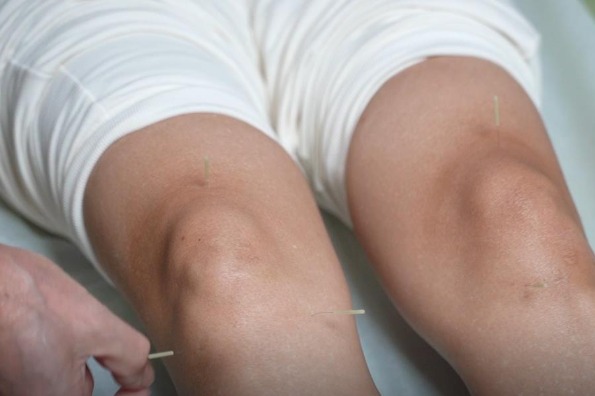Canadian graduate student looks to spread love of TCM


Martin Albert Haase likes to communicate with patients as he gives them acupuncture in his consultation room.
The 38-year-old Canadian said that communication is part of the treatment as traditional Chinese medicine emphasizes the importance of the four traditional diagnosis methodsinspection, auscultation (listening to the heart and lungs) and olfaction (sense of smell), inquiry, and palpation (feeling with the hands).
A graduate student at the Hunan University of Chinese Medicine in Changsha, Hunan province, Haase assists his teacher Zhang Wei, a senior TCM practitioner who is also a professor at the university, in seeing patients and giving acupuncture treatments in the outpatient department at HUCM's First Hospital.
After spending more than 15 years in Changsha, Hunan's capital, Haase is not only fluent in Chinese but also speaks with a Changsha accent. He will receive his master's degree from the Department of Acupuncture and Massage at HUCM next year. He has a deep understanding of TCM, which he calls a treasure of Chinese civilization, and once used TCM therapies to cure a friend from Russia who had consulted him after coughing for more than two months despite taking medicine.
Haase discovered that the constant cough had affected the meridians of his friend's body, making his back muscles tense and compressing his lungs, causing his breathing to be unstable when he coughed.
He was finally able to help regulate his friend's breathing through acupuncture on his neck and back, curing the cough.
"Acupuncture, massage, moxibustion and qigong (a traditional form of exercise) can all be used to help cure," he said. "When the pandemic broke out, the world recognized the role of TCM in the fight against COVID-19."

Now he shares TCM methods used to avoid contracting COVID-19 with his family and friends in Canada, and he has talked about TCM with foreign friends. He said that many friends who used to be dubious about TCM have now changed their attitude thanks to the results of his diagnosis and treatment.
He developed a deep interest in TCM and kung fu as a child.
"China is the birthplace of TCM, so I came here to study it," he said.
Born in 1984 in Victoria, British Columbia, Haase came to HUCM to study acupuncture and massage in 2004. In addition to acquiring basic theoretical knowledge, he has learned how to take a pulse, acupuncture, cupping and other TCM treatment techniques. His desk is piled with books on TCM theory and acupuncture point models.
Zhong Huan, a professor at HUCM, said that he really likes the Canadian student. "He speaks up in class and often expresses innovative ideas," Zhong said, adding that Haase always asks plenty of questions and attends academic conferences on the subject.
Haase also likes to practice kung fu and tai chi, which he studies under Zou Zequn, a famous tai chi master in Hunan. Obsessed with the balance theory of tai chi, Haase believes that it contains the philosophy of Taoism, which is similar to the theory of TCM.
Today, he is a 13th generation practitioner of a tai chi school and vicechairman of the Free Clinic Service Working Committee of the World Federation of Acupuncture-Moxibustion Societies.
He's married to a local woman, and they have two daughters. He teaches them tai chi and acupuncture points when he has time.
Over the years, he has witnessed great changes in Changsha and senses the vitality of China's development.
"There are more and more parks in Changsha now, and the air is becoming better and better," he said, adding that the central metropolis is open and inclusive and life there is comfortable.
Haase practices tai chi and kung fu in a park near his home every morning to keep in shape. He said that if he decides to return to Victoria, which is Changsha's sister city, he plans to open a clinic to spread awareness of TCM and Chinese culture and introduce more people to tai chi, qigong and martial arts to help them build their physiques.




